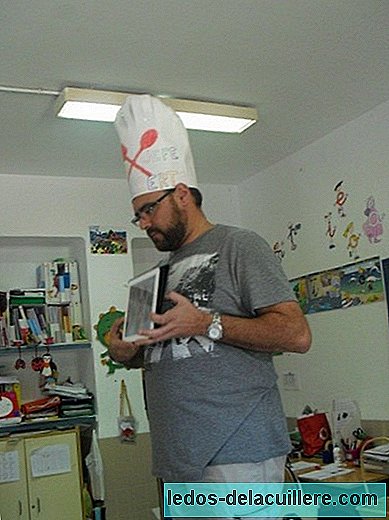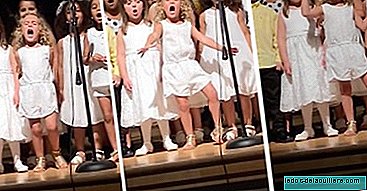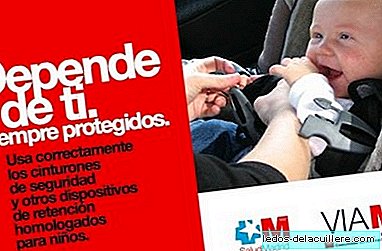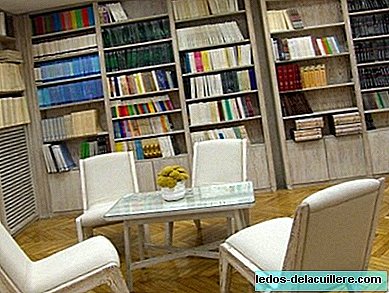
When we conducted a week ago the interview with Manuel Sicilia of KANDOR GraphicsHe told us about a teacher friend of his who is teaching his students to make their own shorts in class. Since since we have Internet it is very easy to find what you are looking for, I was able to quickly find and contact Alberto Molina, friend of Manolo Sicilia, as he calls him, who says he is a friend from the Institute and maintains a weekly contact. Manuel Sicilia says Alberto has great talent and is very persistent, so I think we can be sure that we will have quality animated films made from Spain for the whole family for a long time.
Alberto Molina has been working as a teacher since 2009. Before, he worked for twelve years in an academy that he set up. Then he prepared an opposition for primary school in English. In 2007 he approved without a place and in 2009 he finally got it. So Alberto is a primary school teacher specializing in English. Work in the Los Castaños Rural Public School located in the town of Pitres Alpujarra although by the condition of rural it also has centers in Pórtugos and Busquístar. Alberto lives in a town near Granada and it takes an hour and a half to reach the school on a steep mountain road. The schools are small and have about 40 students on average in each one. The classes are formed by students of different courses and no more than 10 or 12 per class. Alberto explains that the first two years at school were hard although the experience helped him learn a lot.
In the third year he became part of the Management Team, he is Secretary and from there he has been able to make changes. Among them, for example, he explains that when he arrived at school there was only one internet connection in the secretariat of the center where there were only four computers of which two of them were over 15 years old. In the rest of the schools and classrooms there were no computers and no Internet connection.
Alberto has explained to us that the Government School 3.0 plan It served to provide four digital boards and an Internet connection for each location. Currently, the twelve classrooms of the Colleges have a computer with an Internet connection, the teams of the Secretariat and the Teachers' Room have also been renovated. The school has hired a license to work with the Aula Planeta digital platform in the third cycle And finally, from the Secretariat Alberto has managed to get his colleagues to be encouraged in the use of ICTs with intensive use of email, Dropbox, Google Drive and other tools. In that effort to use technology, families are also trying to digitize although most families have neither a computer nor Internet access.
My fellow teachers intensively use email, Dropbox, Google Drive and many more
According to Alberto, the problem that a teacher who wants to use ICTs in his teaching work in a rural environment is that many of the students have not seen a computer at home. For example, Alberto tells us the anecdote of a couple of weeks ago, when he distributed the English books among the students in grades 5 and 6 and the book had a CD with the audios inside. A boy told him: "How nice to master this album to put it to the birds so they don't eat the tomatoes!" In any case Alberto tells us that once students start using new technologies they are like all children of their age, they learn very quickly and in a very motivating way.
In this grade Alberto is the English specialist and it is using ICTs in a more systematic way, especially in the third cycle since most students have a laptop, of which the Board supplies, or a tablet. In class they are working without a textbook, using the Aula Planeta platform in addition to other resources. For example, students are conducting a research project on Halloween. Everyone has to create a document in Google Drive and search for information and generate specific content. At the end of the work they will have to expose it to the rest of their classmates. His goal this year is to do it again and this time in English. I am sure it will be very successful and the students will learn a lot.
In his work with the professors he has achieved that a large part of the Cloister is initiated in the methodology of project work. Thus, during the first quarter they will use the film as a thread Justin and The Sword of Courage and are working on a project on the Epoch of the Castles. In November the whole school will go to see the film and Manolo Sicilia will present it and answer the children's questions. Alberto tells us that he is very proud and satisfied because most of his colleagues are turning to the project and very interesting activities are appearing.
In addition to this extraordinary presentation of Alberto and his work as a teacher, coordinator, organizer and disseminator, we have taken the opportunity to ask you some questions to reinforce and clarify what you have told us. Here are the questions:
How the teacher creates an innovation environment in the classroom with technology
As I said, at the beginning it was very difficult for me to create this environment since the technical and socio-cultural conditions were very bad. I remember that the first year I was in practice and I was waiting for the visit of the area inspector to evaluate my teaching work. I used my laptop to carry all my programming, activities, English listening, notes control, etc. When the inspector arrived asking for papers and I told her that I had everything on the computer she asked me (literal): "And what am I supposed to look at the computer screen now?", I was petrified and I said yes and he became furious saying that I had to have all my paper documentation that what it was like to have a laptop on the table. Fortunately the inspector was retiring that same course.
Until last year I failed to introduce the continuous use of new technologies in the classroom
The truth is that the School Plan 3.0 It came in handy as each student in the fifth and sixth grades of the center was given a laptop and the classroom was equipped with a digital board, which was a great push to create a more innovative environment in the center.
Until last year I have been tutor of Primary classes and it was really a year ago when I managed to introduce new technologies in a more continuous way in the classroom. So you can see what was done during the past course I leave the link to the classroom blog where I explain each of the activities. We also did an activity with some tablets and they published an article in the magazine Education 3.0 specialized in ICTs applied to education.
How technologies can be leveraged in the classroom to enhance student creativity
I believe that new technologies are great tools to foster creativity in students. Today there are hundreds of programs and applications for children to develop all their creativity. An example is in the animated shorts that, I insist, made completely the second and third children of the class. We also use the Educreations app to work the description.

What specific applications have you given to technology in the classroom
This year I am using it more systematically. The first thing I have to say is that in my work case all I have is my iPad. On the iPad I carry everything necessary for management as a secretary (invoices, documents, excel tables, pdf, I take notes for the minutes of the Senate and School Board, records, etc.) Therefore I have managed to manage completely without papers.
From the point of view of the teacher, I also carry everything on the iPad: programming, digital books, attendance control, notes, records, student records, flashcards, songs, listenings, exams, etc.
As I said, we use Classroom Planet For daily work. Older students have all their Gmail account and we communicate by mail, we share documents in Google Drive. If I had been a tutor I would have liked to use Edmodo since this summer I was learning to use it. We also use the Quizlet page to work the vocabulary. Now we are going to start using the Socrative app for exams. We use Spreaker to record Podcast.
I also want to highlight that I have a student with educational needs and I use my iPad applications to work in collaboration with the special education monitor. It's wonderful to see how this guy works with the tablet.
How children respond to the use of technology and if they all do it in the same way
Children respond very well to the use of technology. They are authentic sponges, even those who had not seen a computer in their life a couple of years ago, today they are able to enter the network to find resources and apply them to their learning process. The truth is that all students respond equally well when using the laptop, tablet or POI in class.
When students change course, does the rhythm of creativity and innovation in higher courses keep up?
Here the problem is the same as always, everything depends on the teacher who is with the children. If you are someone who is interested in recycling and training in the world of ICTs, you will end up introducing them into your classroom. If, on the other hand, he is someone who is not interested in these resources, he will not use them and nobody can force him / her to use them. The truth is that in this sense much remains to be done and changes could be made in teacher training to encourage its recycling. I think that if someone cannot be forced to learn to use one or another resource, mechanisms could be used to encourage many to be encouraged. For example, through extra points in the transfer contest, at no cost to the Administration.
How the School and the Parents' Associations respond to the introduction of these tools by teachers
As I mentioned, the introduction of these tools in families is the most difficult aspect to improve. It is difficult to show the advantages of these resources to those who have never had contact with them. However, through the creation of the website and classroom blogs, we have managed to open the classrooms to families and realize that these tools are useful and beneficial for their children. As an example I can mention that the "star" gift of the past Communions was a tablet. And every year there are more children with Internet access at home.
How the kids work at home what they learned in the classroom
In higher courses, above all, they are increasingly accustomed to using ICTs to do homework, projects, search for information, etc. As I mentioned, there are more and more homes in this area with access to the network. It should also be mentioned that the centers of Guadalinfo They are doing a great job in this regard.
And so far the interview with Alberto Molina, primary school teacher, who will turn 40 next Monday, October 28. So we take the opportunity to congratulate you, wish you a very happy day and thank you because your interview has been, in addition to exciting and full of experiences, very enriching about the extraordinary work that is done with students in Spain. The passion with which he does his work can be seen in his answers and I am sure that your students and their families will thank you for the work done when your children are older.












